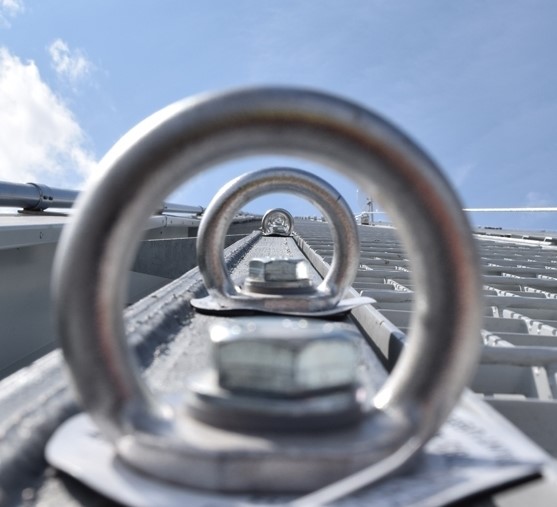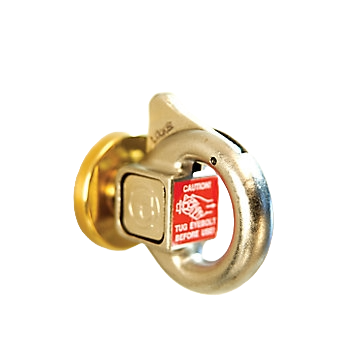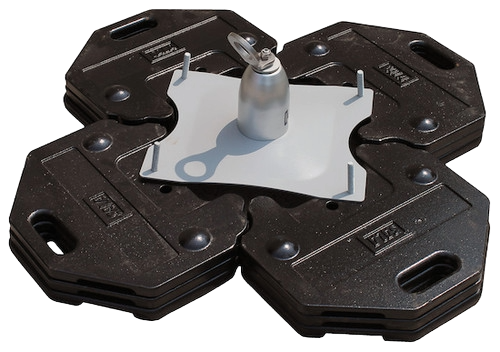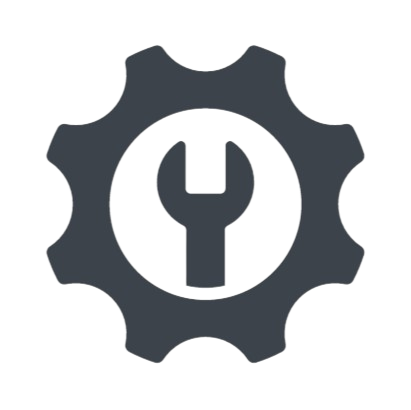

Fall Protection Anchor Points

All fall protection systems require a reliable point of connection. Anchor systems comprise the anchor device and structural anchor that fixes it to the substrate. Anchor systems can be a simple eye bolt, a post and base plate or complex continuous wire or rail based system.
Regardless of the type of anchor used, the anchor device must be able to resist the loads that are required of it. The British Standard BS 8610: 2017 sets out the requirements and test methods for type testing anchor systems.
A simple form of anchor is the eyebolt and we supply a range of fixed and removable eyebolts and single point anchors that can be installed on most buildings. Conventional eyebolts are available in a range of different finishes including;
- Galvanised steel
- Stainless steel
- White as standard.
Pushlock Eyebolts
Pushlock safety eyebolts provide a discreet, yet highly effective alternative to conventional ones whose aesthetics can impair the visual characteristic of their environment. The Pushlock socket is permanently installed into the structure. When required, a user can insert a pushlock eyebolt into the socket to create a secure anchor.
The socket cover caps are available in a range of finishes, including:
- Prestige brass
- Stainless steel
- White (other colours are also available to order)


Freestanding Weighted Anchors
These EN 795 Type E anchors provide a single point anchor for users that need temporary access to flat roofs or structures. They are suitable for pitches of up to and including 5 degrees, and where it is impractical to install more traditional fall protection systems. They remove the need to permanently attach the anchor to a structural element however, due to their weight, careful consideration should be given to the strength and finish of the surface on which they will be put.
All of our anchor point products have been tested and approved for use on roofs of various material, including:
- Concrete
- Single ply membrane
- Bitumen membrane
- Asphalt-sanded, asphalt-stone chipped and steel profile roofs
- Due to the inherent risks of working at height, it’s critical that you work with the right safety partner. With us, you’ll have the peace of mind that comes from working with a technically competent partner that offers high-quality solutions. We can help you select the right type of eyebolt or anchor point for your circumstances and help you maintain compliance with the relevant standards and regulations (EN 795, BS 8610 & BS 7883).
Installation, Testing and Certification
Eyebolts and anchor points should be installed as part of a complete fall protection solution by a competent company and be inspected every six months to maintain safety standards. As experts in fall protection solutions, we offer a full design service, installation of the product and can provide ongoing annual inspection and certification.
Click here to find out more about our testing and certification offer.
For more information about our fall protection anchor point products, or to discuss your specific requirements, please contact our experts:
Please call us on 0330 390 0822 or email info@arcoservices.co.uk

-
Guardrails Edge Protection
Guardrails are designed to completely remove the risk of a fall from height. They act as a physical barrier and mean workers do not need to be trained to use or inspect them, removing the need to wear personal fall protective equipment (FPE).
More -
Collective Fall Protection
Collective fall protection solutions are designed to protect more than one person falling from height. They protect all employees collectively without them needing a harnesses or restrictive working line.
More -
Abseil Systems
Abseiling can provide safe and efficient access for buildings. We can provide an end-to-end service for abseil rails and anchors, from design and installation, through to inspection and certification.
More -
Fall Protection Anchor Points
We can help you select the right type of eyebolt or anchor point for your circumstances and help you maintain compliance with the relevant standards and regulations
More -
Testing and Certification
Using our manufacturer trained engineers, we provide nationwide coverage to install, service and certify the wide range of fall protection and abseil systems on the market
More -
Ladder Safety Systems
Safety when ascending and descending a ladder system remains paramount but also it is important that the worker can complete the work by ascending and descending comfortably and without restrictions.
More -
Horizontal and Vertical Lifelines
It is generally accepted that the starting point when considering all work at height should be the hierarchy of control. Once it’s determined that working at height is essential, the next step is to ensure workers are not exposed to unnecessary risk and that suitable and sufficient means for protection from falls from height are in place such as a fall protection system.
More -
Davit Arm Systems
By providing height and outreach, davits offer a point of attachment that is convenient for its user. Due to the high overturning loads that can be generated by davit systems, it is essential that stability is provided by a base system or socket that is suitable for the task.
More -
Our Shop
You need to know your people have the right kit for the job when working at height, in a confined space or where the working environment demands the use of respiratory equipment. As a truly independent supplier, we’re not tied to any brand and can offer impartial advice and recommendations
More